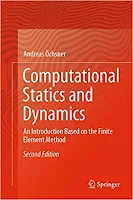Principles of Testing Soils, Rocks and Concrete
T. S. Nagaraj ...708 pages -Publisher: Elsevier Science; (January, 1993) ... Language: English - ISBN-10: 0444889116 - ISBN-13: 978-0444889119.
Soils, rocks and concrete are the principal materials a civil engineer encounters in practice. This book deals with the material analogies, their implications in property characterization, giving attention to similar as well as dissimilar methods in respect of each of these three materials. It provides an integrated, systematic approach for realistic assessment of engineering properties of soils, rocks and concrete. Geotechnical engineers, civil engineers and materials scientists will be interested in this volume.
Soils, rocks and concrete are the principal materials a civil engineer encounters in practice. This book deals with the material analogies, their implications in property characterization, giving attention to similar as well as dissimilar methods in respect of each of these three materials. It provides an integrated, systematic approach for realistic assessment of engineering properties of soils, rocks and concrete. Geotechnical engineers, civil engineers and materials scientists will be interested in this volume.





